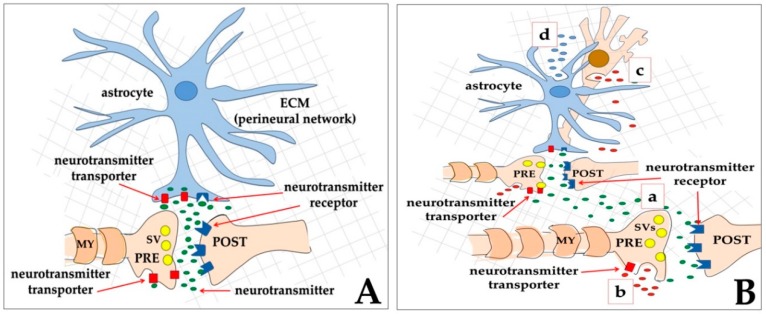Figure 2.
Schematic drawing of two types of neurotransmission, according to the initial proposal of the model [109,110]. (A) In the wiring transmission (WT), the presynaptic neuron (PRE) releases neurotransmitter molecules (small green ovals) that bind to their receptors (dark blue) on the post-synaptic element (POST). Excess neurotransmitters are then taken back by the presynaptic neuron through neurotransmitter transporters (red rectangles); In (B), a few ways to obtain volume transmission (VT) are represented: (a), the presynaptic neuron (PRE) releases a neurotransmitter (small green ovals) that not only binds to its receptors on the post-synaptic element (POST), but also diffuses at different distances, thus reaching other faraway synapses that will be activated; (b) extrasynaptic release from the axon of signal molecules (small red ovals) into the extracellular matrix, outside the synaptic cleft; (c) extrasynaptic release of signal molecules (small red ovals) from the soma of a neuron; (d) gliotransmitter release from an astrocyte (small blue ovals). In both WT and VT, astrocytes play a central role since they can express on their membranes both neurotransmitter receptors and neurotransmitter transporters, and, in addition, they can release gliotransmitters.

